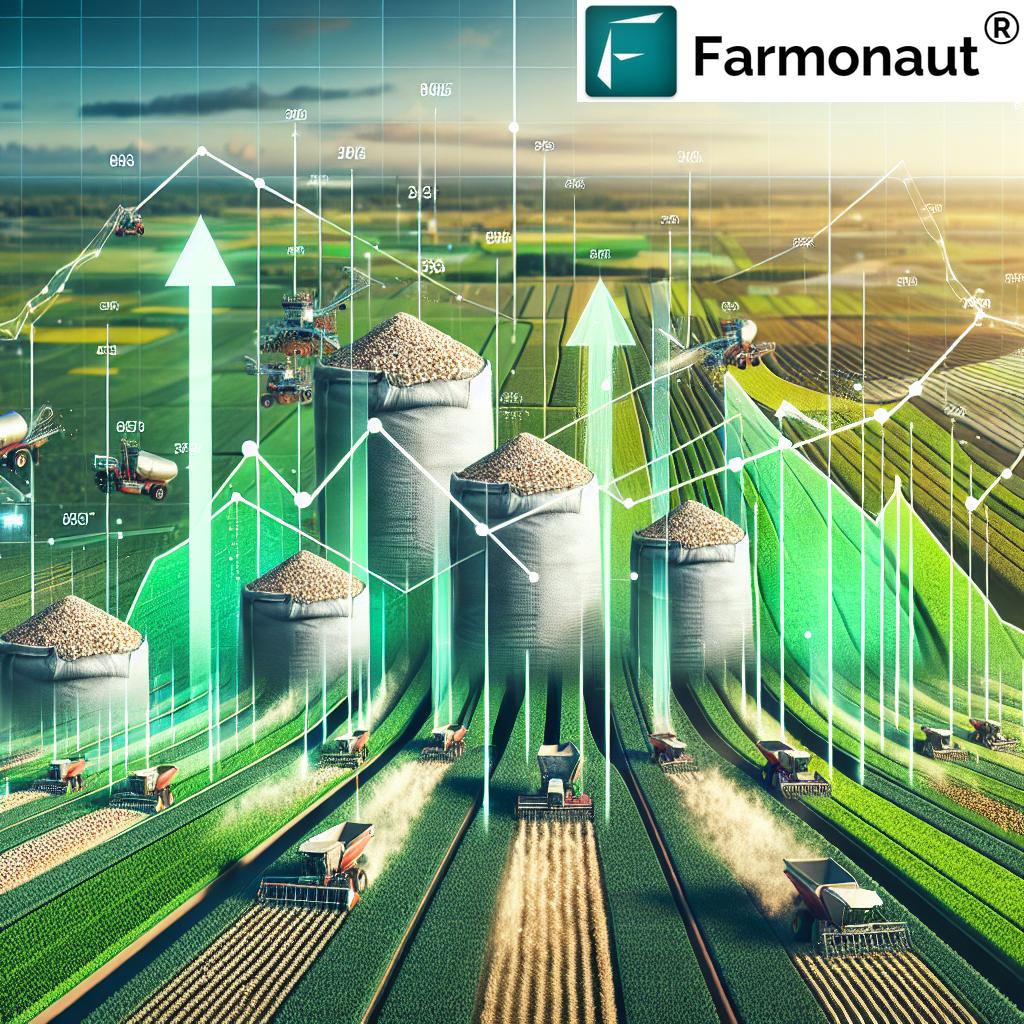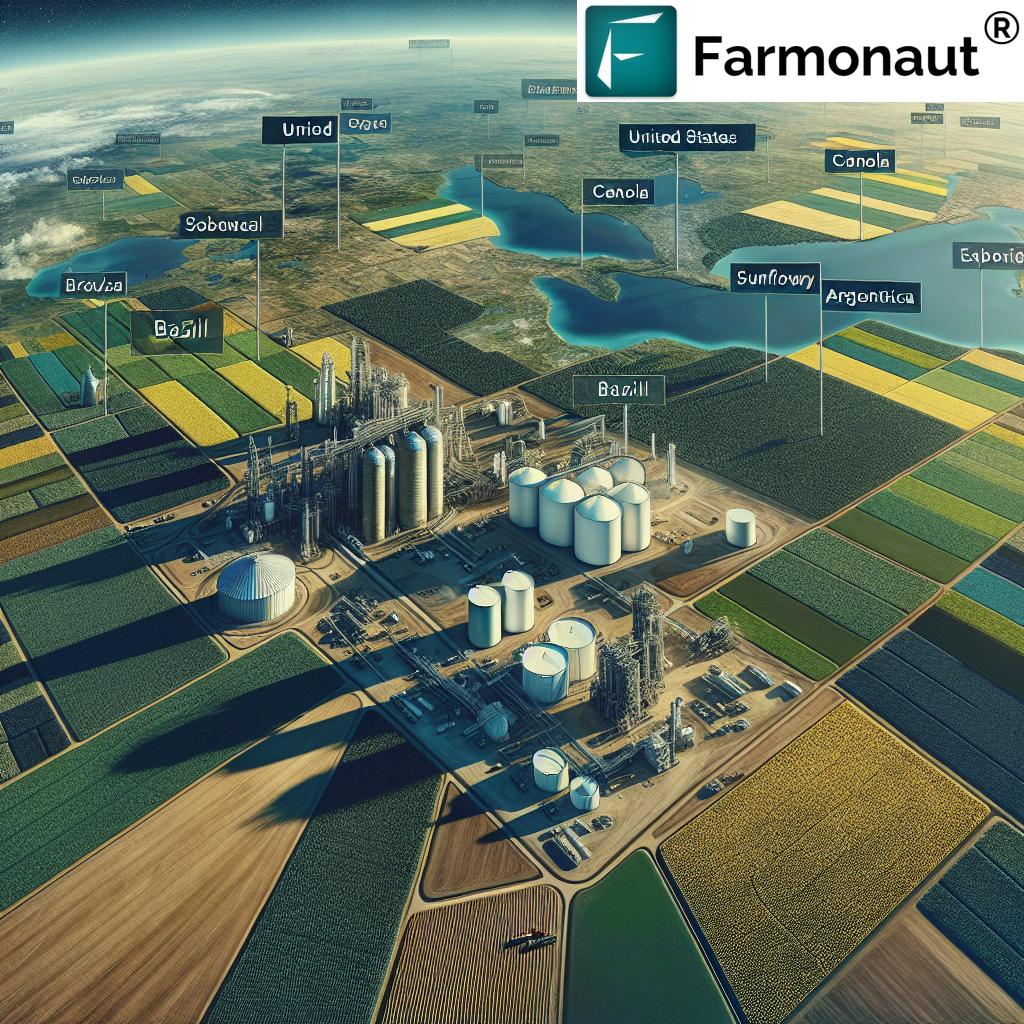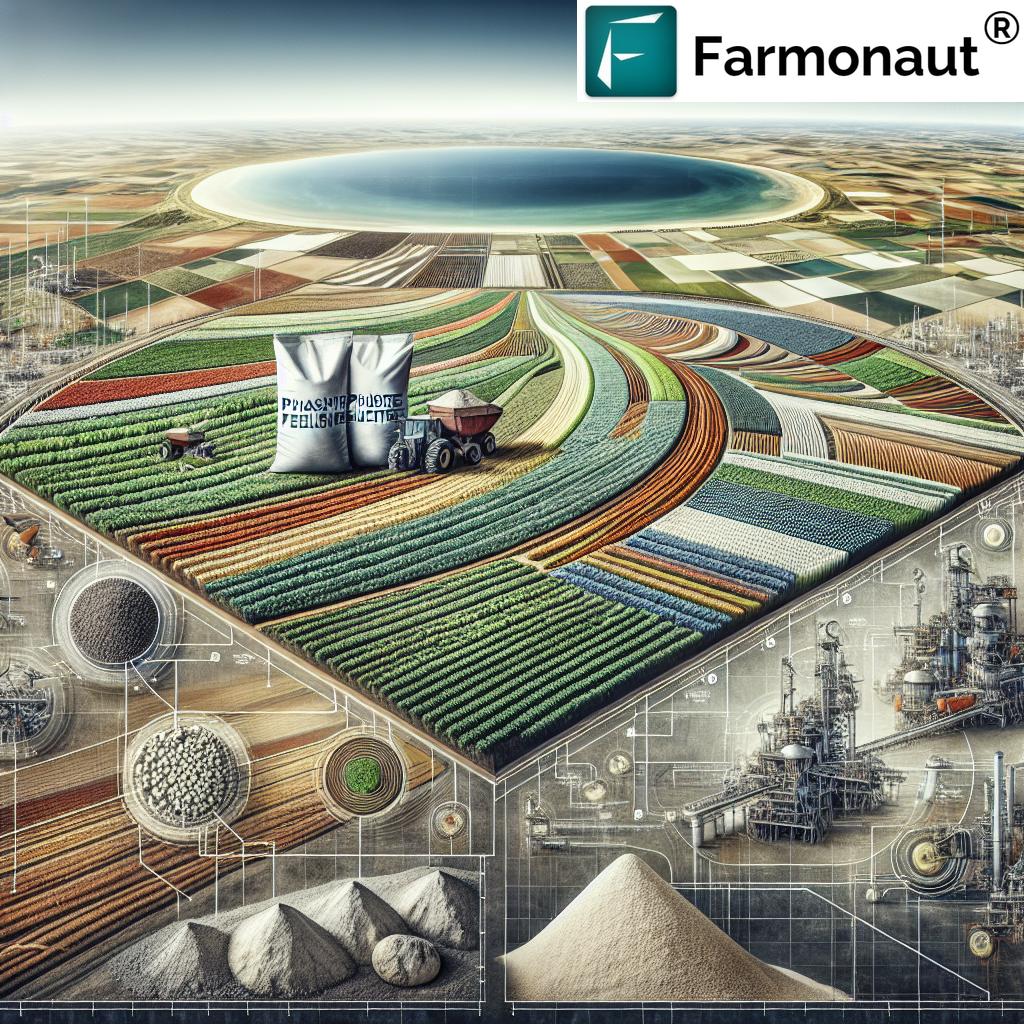Current Global Urea Price per Tonne & Rice Price per Kg: Market Dynamics and Trends in 2025
“In 2025, global urea prices average $350 per tonne, directly impacting fertilizer costs for rice farmers worldwide.”
Introduction: Understanding 2025’s Urea & Rice Price Landscape
In 2025, the global agricultural sector continues to feel the pronounced impact of fluctuating input costs, with the current global urea price per tonne and current rice price per kg playing a critical role in shaping farm economics and underpinning food security worldwide. For everyone—from smallholder farmers and large agribusinesses to policymakers—understanding these dynamic, interconnected pricing trends is essential for decision-making, strategic planning, and sustainable production.
The interplay of urea fertilizer pricing and rice commodity trends in 2025 reflects a complex story driven by global supply chains, energy market volatility, environmental regulations, geopolitical risk, and climate variability. These factors not only affect current price points but also have strong implications for the stability and resilience of food production systems worldwide.
This comprehensive blog delves into the current global urea price per tonne, analyses real-time urea fertilizer price dynamics, breaks down the current rice price per kg across major agricultural markets, and unpacks the key market trends influencing agriculture throughout 2025.
For developers and agritech innovators:
Access Farmonaut’s Satellite Data API and detailed API Documentation for robust integration into your agri-platforms.
Current Global Urea Price per Tonne (2025)
The current global urea price per tonne remains a focal point for all agricultural stakeholders in 2025. As a nitrogen-rich fertilizer, urea is one of the most widely used and critical inputs in modern agriculture, prized for its high nutrient content and relatively low cost compared to other nitrogenous fertilizers.
Key Facts: Urea Pricing in 2025
- The global average urea price per tonne hovers around $450 to $500 (USD) in early 2025.
- Prices are strongly influenced by energy market volatility—notably, the cost of natural gas, which is closely tied to urea production costs.
- Major producers and exporters like China, India, Russia, and Middle Eastern countries continue to play a significant role in supply, export policy, and pricing dynamics.
- Environmental regulations push for greener manufacturing processes, slightly increasing urea’s final market cost.
Influencing Factors on Current Global Urea Price Per Tonne
- Energy Prices: Urea production is closely tied to natural gas. Any price spike or supply disruption in global gas markets (notably Europe and the Middle East) has an immediate upstream effect on urea costs.
- Geopolitical Tensions: Instability or trade disputes involving major exporting regions (China, Russia, Middle East) ripple through the global supply chain, impacting availability, logistics, and overall pricing.
- Export Policies and Strategic Stockpiling: Countries like China implement export quotas and stockpile urea to ensure domestic supply, influencing global price stability and restricting international availability during critical cropping cycles.
- Governmental Subsidies and Market Demand: India and Brazil have robust subsidy frameworks that shield domestic farmers from spikes, driving demand and affecting global price trends.
- Logistics and Distribution Challenges: Poor infrastructure in parts of Sub-Saharan Africa, Southeast Asia, and other developing regions leads to prices 10–20% higher than the global average.
- Environmental Regulations: The shift toward greener, low-emission manufacturing processes is raising upstream costs for producers in key regions.
Country Highlights: Urea Exporters & Policy Influence
- China: Strategic stockpiling and periodic export restrictions affect global supply.
- India: World’s largest urea importer, strong government intervention ensures subsidized fertilizer availability for local farmers.
- Russia & Middle East: Stable producers, but susceptible to sanctions, energy market turbulence, and regional conflicts.
These influencing factors underpin the current urea fertilizer price scenario and highlight the complex dynamics that stakeholders must navigate in 2025.
How Urea Price Trends Impact Agricultural Costs and Productivity
The current global urea price per tonne directly affects the cost of rice production worldwide. Since urea is the preferred source of readily available nitrogen, its pricing often dictates how and when farmers in major rice-producing countries such as India, China, Vietnam, Thailand, Brazil, and the USA can fertilize their crops.
Higher costs increase the cost of production, while price stability or modest declines encourage intensified cropping cycles and improved yields.
Current Urea Fertilizer Price Dynamics Across Major Markets
While the current global urea price per tonne serves as a benchmark, the farmgate urea fertilizer price—what farmers actually pay—varies due to transportation, distribution costs, and domestic subsidies. Let’s examine the current urea fertilizer price in leading agricultural economies and the drivers underpinning these variations.
Regional Urea Fertilizer Prices in 2025
- India: Owing to a robust subsidy framework, urea fertilizer price for farmers stabilizes around $500–$550 per tonne, even after facing volatility in recent years. The government’s intervention is critical to affordability and ensuring supply during peak cropping seasons.
- Brazil: Faces notable transportation and import costs. Farmgate prices average $520–$580 per tonne in some regions, reflecting logistical challenges in the country’s vast agricultural heartland.
- United States & EU: Prices are comparable to the global average, but can be affected by energy volatility and local regulatory shifts toward sustainable fertilizer practices.
- Sub-Saharan Africa, Southeast Asia: Urea prices are often 10%–20% above the global average due to poor rural infrastructure and fragmented supply chains, making fertilizer less accessible for smallholder farmers.
Subsidies and Policy Frameworks: Shield or Stressor?
- Subsidy frameworks are pivotal to keep urea fertilizer price within reach for millions of farmers, especially in India, Pakistan, Indonesia, Bangladesh, and Egypt.
- However, rising production and logistics costs in 2025 put pressure on national budgets and, in some cases, could lead to reduced scope or delayed disbursement.
- In regions lacking strong government support, urea price disparities can cause yield gaps and reduced food security.
Farmgate Price Variability & Its Agricultural Impact
- Inefficiencies in the supply chain and infrastructure constraints amplify cost differences for smallholder farmers in remote areas.
- This pricing disparity underscores the urgent need for targeted policy interventions and improved logistics, especially as food demand grows amid population pressures.
For a deeper dive into cost-tracking and yield optimization, explore Farmonaut’s Fleet Management Solutions for enhanced logistical planning and Carbon Footprinting Services for monitoring and reducing input-related emissions at the farm level.
“The global rice price in 2025 hovers around $0.40 per kg, reflecting ongoing market fluctuations and demand trends.”
Current Rice Price per Kilogram: Global Trends in 2025
As the staple grain for over half the global population, rice price per kg is a cornerstone of both food security and market stability. In 2025, the current rice price per kg on major commodity exchanges averages $0.60–$0.70 (USD) for medium-quality white rice, with some Asian and African markets quoting slightly lower or higher based on quality, currency swings, and local supply-demand conditions.
Globally, rice price stability in 2025 is challenged by rising input costs (notably, fertilizer and energy), erratic climate events, and shifting export-import policies among major rice-producing and trading countries.
Factors Influencing Current Rice Price Per Kg
- Weather Variability: Droughts, floods, and monsoon irregularities—especially in India, Vietnam, Thailand, Indonesia, and Bangladesh—result in yearly swings in output and prices.
- Elevated Input Costs: The current global urea price per tonne feeds directly into cost of rice production. High fertilizer and labor prices in 2025 place upward pressure on final rice prices.
- Governmental Market Interventions: Strategic reserves, export bans, or targeted subsidies are used to buffer consumers and smooth out price spikes.
- Export Policy Shifts: Exporting giants like India and Vietnam occasionally restrict outgoing supply for domestic stability, tightening global rice markets and pushing up prices elsewhere.
- Demand Trends: Rising incomes and changing diets, especially in West Africa and the Middle East, continue to nudge up demand for higher-quality rice, influencing per kilogram pricing.
Strategic Management of Rice Price & Food Security
- Import-Dependent Countries: Many African and Middle Eastern countries are highly sensitive to global rice price movements, as local production shortfalls must be offset by imports.
- Policy Interventions: Subsidies, rationing, and strategic grain reserves are deployed to ensure broad affordability and prevent market panic amid fluctuating prices.
- Technological Innovation: Drought-tolerant, higher-yield rice varieties and smart irrigation are increasingly critical to cushion against yield drops and maintain supply.
Regional Pricing: Examples in 2025
- India: Domestic prices $0.45–$0.60 per kg, export prices slightly higher as government oversees exports and maintains significant rice reserves.
- Vietnam & Thailand: Export prices $0.60–$0.70 per kg for medium-grade, often higher for premium and specialty rice.
- Brazil: As a major emerging exporter, prices are close to the global average but can spike after poor harvests or unexpected demand surges.
For actionable advice and remote rice monitoring, leverage Farmonaut’s Crop Plantation & Forest Advisory tools for insights into vegetation health, yield potential, and sustainability.
Comparative Pricing Trends Table (2025 Estimates)
| Country/Region | Urea Price per Tonne (2025, USD) | Urea Fertilizer Price Change YoY (%) | Rice Price per Kg (2025, USD) | Rice Price Change YoY (%) |
|---|---|---|---|---|
| India | $500 | +2.5% | $0.55 | +1.8% |
| China | $470 | +1.2% | $0.48 | +2.1% |
| USA | $490 | +3.0% | $0.65 | +2.7% |
| Brazil | $530 | +2.9% | $0.63 | +2.0% |
| Global Average | $480 | +2.4% | $0.60 | +2.2% |
| Southeast Asia | $520 | +3.5% | $0.57 | +2.5% |
| Middle East | $450 | +1.3% | $0.68 | +1.2% |
Key Market Dynamics Affecting Urea & Rice Prices
The interlinkage of urea and rice prices reflects broader trends and challenges within the global agriculture sector in 2025. Below, we summarize the critical dynamics reshaping the market:
Energy Volatility & Production Disruptions
- Sharp swings or supply disruptions in natural gas markets drive up fertilizer manufacturing costs globally.
- Exporting regions such as the Middle East and Russia are especially vulnerable to policy shifts and sanctions, contributing to periodic price fluctuations.
Export Policies & Global Trade Flows
- Regular updates to export quotas or bans from China (urea) and India (rice) tilt the market balance and influence prices on every continent.
- Strategic stockpiles and trade negotiations play a key role in market stability.
Environmental Regulations & Greener Processes
- New climate legislation and industry shifts toward greener fertilizer manufacturing have slightly elevated costs in 2025.
- Farmonaut’s carbon footprinting tools empower stakeholders to track and reduce the environmental impact associated with fertilizer usage.
Input Cost Inflation & Food Chain Pressure
- Increased urea fertilizer prices elevate production costs for farmers, making food affordability and agricultural profitability central policy concerns.
- Efficient resource management becomes essential at every level—from government agencies to smallholder farms.
Demand-Side Factors: Diets, Populations, and Income Growth
- The world’s rising population and evolving dietary patterns accelerate rice demand.
- Smallholder and large agribusinesses must adapt to rapidly shifting market preferences.
Critical Implications for Agriculture & Food Security in 2025
The current global urea price per tonne and current rice price per kg are not only economic data points—they have a pronounced impact on everyday lives, farm viability, and food security frameworks in both developed and emerging economies.
1. Farmer Profitability & Input Use Intensity
- Higher urea prices compress profit margins, sometimes forcing farmers to reduce fertilizer application.
- Risk of reduced yields—immediately affecting rice supply, commodity stocks, and local market stability.
2. Affordability & Food Access
- Input cost inflation for fertilizers like urea is often passed down the chain to end consumers, influencing the affordability of staple foods.
- For vulnerable populations, even a $0.05/kg rise in rice price can escalate food insecurity.
3. Policy Response: Subsidies and Market Interventions
- Governments play a critical role—expanding or streamlining fertilizer subsidies, enhancing food distribution safety nets, and, when necessary, managing trade flows to preserve domestic stability.
- But subsidy frameworks must balance budgetary pressure with food security needs—especially during input cost surges or export restrictions.
4. Food Security & Supply Chain Sustainability
- Supply and price shocks in urea or rice ripple throughout the food chain, impacting everything from availability to nutrition to the global inflation.
- Robust supply chain management tools—such as Farmonaut’s Blockchain-Based Traceability solutions—are increasingly valuable for verifying supply origins, reducing fraud, and enabling transparent market transactions.
5. Climate & Environmental Concerns
- Unpredictable weather and climate extremes demand resilient cropping systems and environmentally conscientious resource management.
- Carbon monitoring and emission reduction will shape subsidy and compliance frameworks in years ahead.
Emerging Trends: Innovations & Sustainable Solutions
Amid ongoing input cost volatility and climate-related challenges, a slate of emerging trends is shaping the path toward a more sustainable, productive future for the sector. Some key trends for 2025 and beyond:
1. Climate-Smart Rice & Fertilizer Technologies
- Drought-tolerant and high-efficiency rice varieties (often powered by satellite-driven advisory or AI) are gaining momentum—supporting yield resilience even as climate volatility increases.
- Zero-waste fertilizers, green ammonia, and precision application technologies help reduce overuse, environmental runoff, and cost pressures.
2. Satellite and AI-Driven Advisory Systems
- Real-time field monitoring, yield forecasting, and predictive analytics equip both smallholders and large agribusinesses to maximize input efficiency and manage risks dynamically.
- Farmonaut’s Large Scale Farm Management platform delivers scalable, satellite-based tools for remote field supervision, resource optimization, and intelligent decision-making.
3. Financial Innovation: Crop Loans and Insurance
- Satellite-verified crop health and yield data accelerate loan approvals and reduce risk for both lenders and farmers.
- Discover Farmonaut’s Crop Loan & Insurance Services for streamlined access to credit and crop protection, especially amid input price uncertainty.
4. Supply Chain Digitization & Blockchain Traceability
- Blockchain technology, as utilized in Farmonaut’s traceability modules, ensures authenticity at each stage—reducing fraud and supporting transparent, sustainable food trade.
5. Data-Driven Sustainability Compliance
- Pressure from governments and consumers for greater carbon transparency leads to new demand for near-real-time compliance monitoring and reporting.
- Solutions like Farmonaut’s Carbon Footprinting Service support easy measurement and emissions management.
How Farmonaut Empowers Stakeholders with Satellite Solutions
At Farmonaut, we are committed to supporting agricultural, mining, infrastructure, and defence sectors with technologies designed to optimize productivity, reduce costs, and advance sustainability. As the volatility of current global urea price per tonne and the current rice price per kg impact operational planning for stakeholders worldwide, Farmonaut’s satellite-driven platform provides unique advantages.
Our Core Offerings
- Satellite-Based Monitoring: Real-time insights on crop health, water stress, and nitrogen uptake empower smarter fertilizer and irrigation management, minimizing waste and input costs.
- AI & Jeevn Advisory: Tailored, AI-driven recommendations for optimal input use, pest management, and timing—maximizing yields and resource efficiency for both smallholders and large enterprises.
- Blockchain Traceability: Secure supply chain verification to enhance food safety, market trust, and regulatory compliance.
- Fleet and Resource Optimization: Tools for streamlined logistics and input distribution, ensuring timely delivery to even the most remote farm locations.
- Environmental Impact Tools: Track and report on carbon footprint, water usage, and sustainability metrics.
Our suite of digital tools is accessible via mobile apps, web, and API integrations—democratizing technology for users across diverse industries and regions.
Who Benefits?
- Farmers: Make smarter, data-driven fertilizer decisions; optimize input use & monitor fields remotely.
- Agri-businesses: Scale operations with robust management, traceability, and fleet optimization tools.
- Policymakers: Gain situational awareness for effective subsidy targeting and food security strategies.
- Financial Institutions: Streamline crop loans and insurance with satellite-validated data, reducing risk and fraud.
Try Farmonaut’s solutions today—
Download on Web, Android, or iOS here.
FAQs: Current Global Urea Price per Tonne & Current Rice Price per Kg
Q1: What is the current global urea price per tonne in 2025?
The current global urea price per tonne fluctuates around $450–$500 USD, with regional variations due to logistics, subsidies, and input cost pressures.
Q2: What drives the urea fertilizer price for farmers in different countries?
Local urea fertilizer price is influenced by transportation, subsidies, import/export policies, and currency value. Countries with strong subsidy frameworks, like India, typically have more stable farmgate prices.
Q3: What is the current rice price per kg globally?
The current rice price per kg is approximately $0.60–$0.70 USD on major commodity exchanges, with domestic prices in some Asian and African countries being slightly lower due to subsidies and local production.
Q4: How do high fertilizer prices affect rice production and food security?
Elevated urea prices increase the cost of rice production, potentially lowering input use and yields—posing risks to supply, food security, and affordability, especially in low-income regions.
Q5: Can technological interventions help manage these market uncertainties?
Yes! Digital solutions, like Farmonaut’s real-time satellite monitoring, AI-based crop advisory, and blockchain traceability, empower farmers, businesses, and policymakers to make agile, informed decisions amid pricing uncertainties.
Q6: What are the benefits of blockchain traceability in agriculture?
Blockchain traceability provides a secure, tamper-proof system for tracking agricultural produce from farm to consumer—ensuring authenticity, reducing fraud, and supporting regulatory compliance.
Q7: How do environmental regulations influence urea and rice markets?
New regulations require greener fertilizer manufacturing and sustainable production practices. This can raise costs but also incentivizes innovation and better environmental stewardship sector-wide.
Conclusion: Navigating a Volatile Global Market
In 2025, the current global urea price per tonne and current rice price per kg continue to reflect a nuanced balancing act—shaped by supply chain volatility, shifting policy frameworks, environmental concerns, and ever-present geopolitical risks. These two critical price points set the stage for the global agricultural sector’s ongoing challenges and opportunities.
For stakeholders—whether smallholder farmers, large agribusinesses, or policymakers striving for sustainable agricultural productivity—monitoring and adapting to these pricing trends is essential for ensuring food security and farm viability amid unpredictability.
With innovations in satellite technology, digital management tools, and real-time data advisory, Farmonaut stands ready to support stakeholders in making informed, resilient decisions, ensuring that the future of agriculture remains productive, sustainable, and secure.














